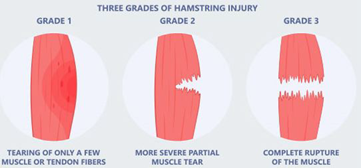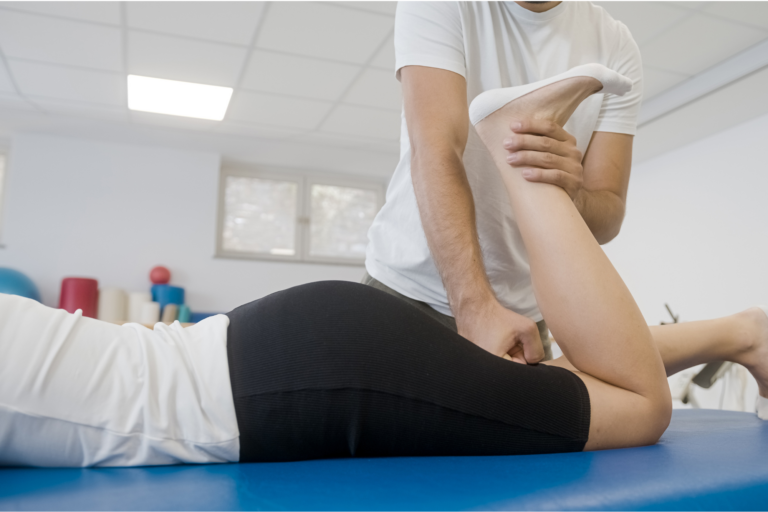I have Hamstring pain, will Physiotherapy help?
Hamstring strains and tears are very common and most often happen due to a muscle overload or when the muscle is stretched beyond its capacity. It can be accompanied by an audible pop or pull feeling where the hamstring muscle lengthens as it shortens and tears. These tears will typically happen during explosive moves such as sprinting, jumping or lunging, but can also happen gradually during slower movements.

There are three types of hamstring tears:
Grade 1: A mild muscle strain
- These will usually cause sudden pain and tenderness at the back of the leg. It will be painful to move your leg but the strength should not be affected.
Grade 2: A partial muscle tear
- These are usually much more painful. They will also be accompanied by bruising and swelling at the back of your leg and your strength will be affected.
Grade 3: A complete muscle tear
- These are severe tears and will usually be very painful, tender, bruised, swollen and will be difficult to walk or stand. You will be unable to use the affected leg.

Physiotherapy is very important for the recovery of hamstring strains and tears. Within the first few days of this injury, your physiotherapist can diagnose the exact grade of hamstring tear that you have and provide guidance on the very early stages for recovery. It is important to treat these injuries early as it helps to avoid extensive scarring of the tissue.
Initial stages of your physiotherapy treatment will aim to decrease pain and swelling. Once this has settled, your physiotherapist will start to gradually add flexibility and strength into your rehabilitation program. It is important to work within your pain level when first starting into your exercises as to avoid any increase in pain. Your physiotherapist may also use hands on work throughout your treatment on your affected muscles to reduce pain and tightness and to enhance the healing of the injured structures.

The intermediate and late stages of your rehabilitation will challenge the hamstring muscles much more. They may include jogging, hopping, jumping and sprinting to assess the level of strength and durability that your hamstring has towards the end of your program. Your physiotherapist will be able to provide guidance on when you have completed your recovery or when it is safe to return to your sport.
By following a full and extensive rehabilitation program for your hamstring injury, you will reduce the chances of it happening again in the future.
Please do not hesitate to contact us if you have any questions.
You can follow us on our Facebook page and Instagram for more updates.
